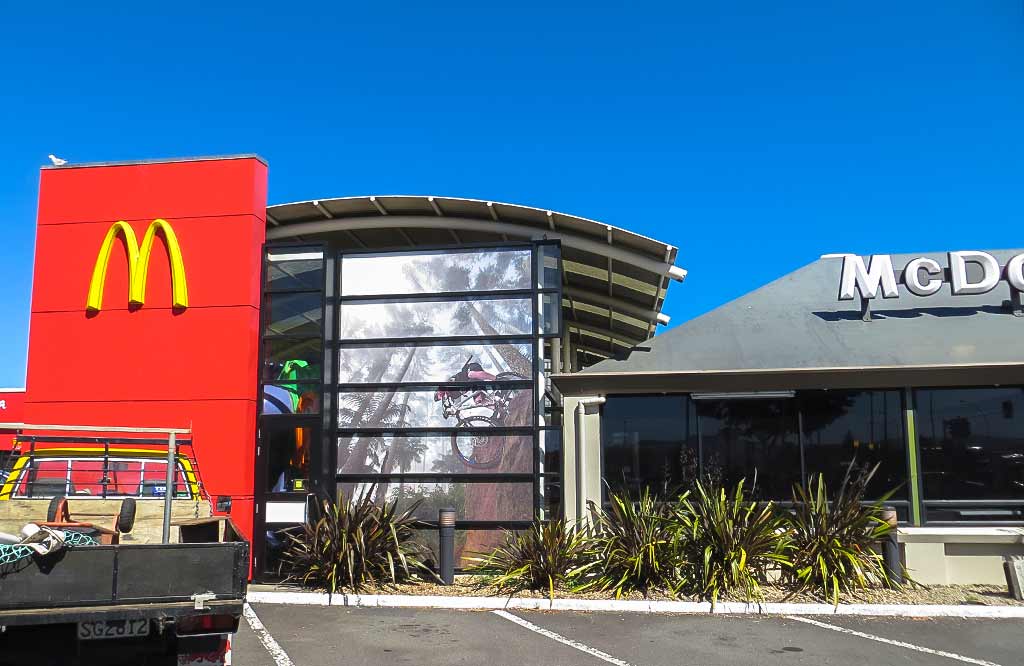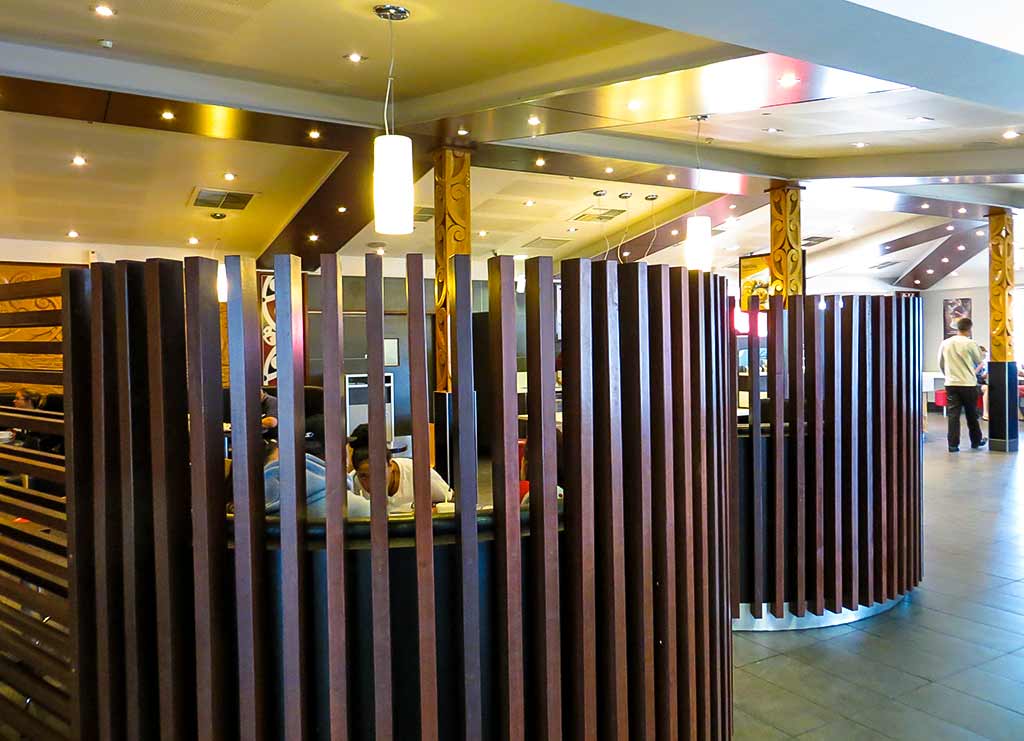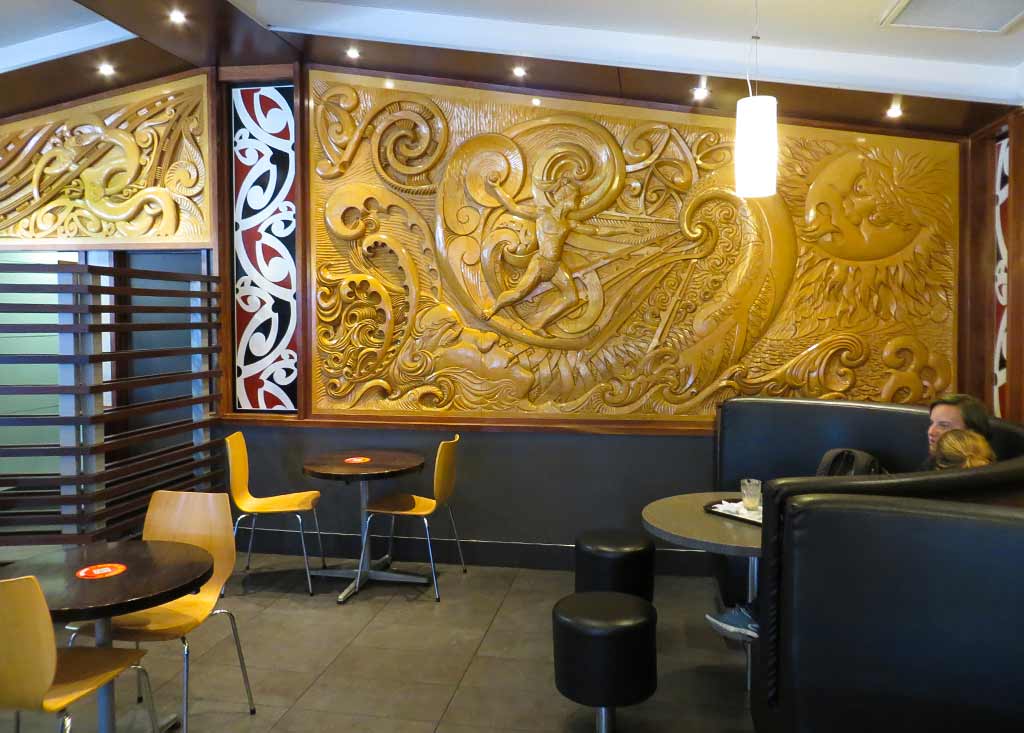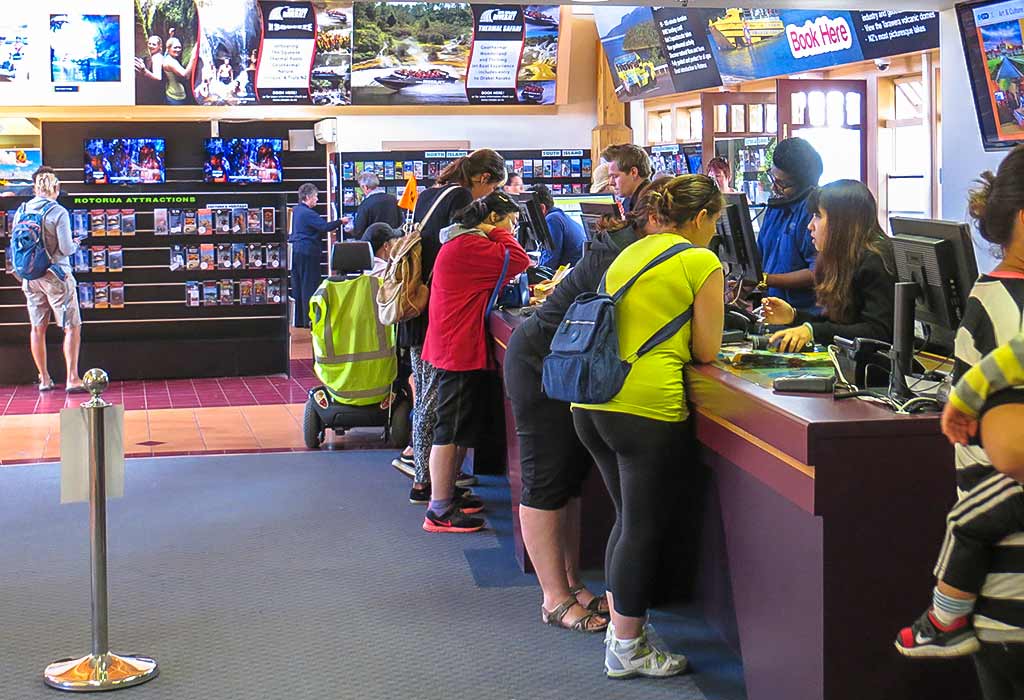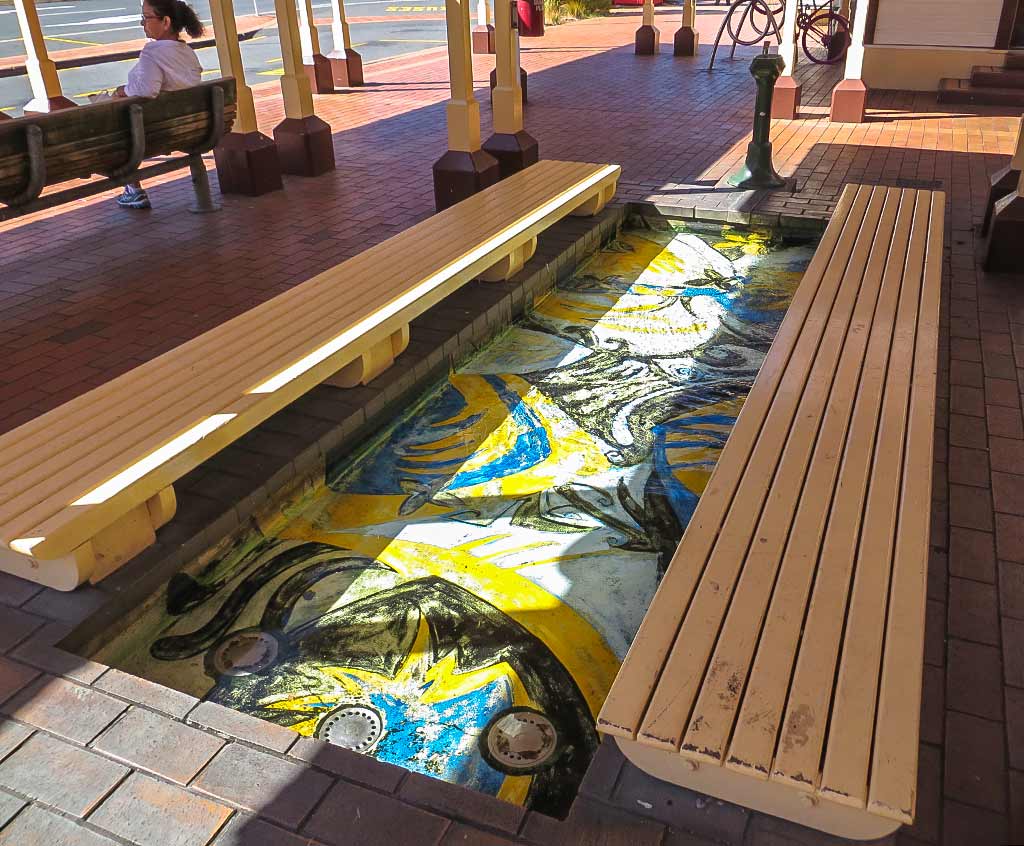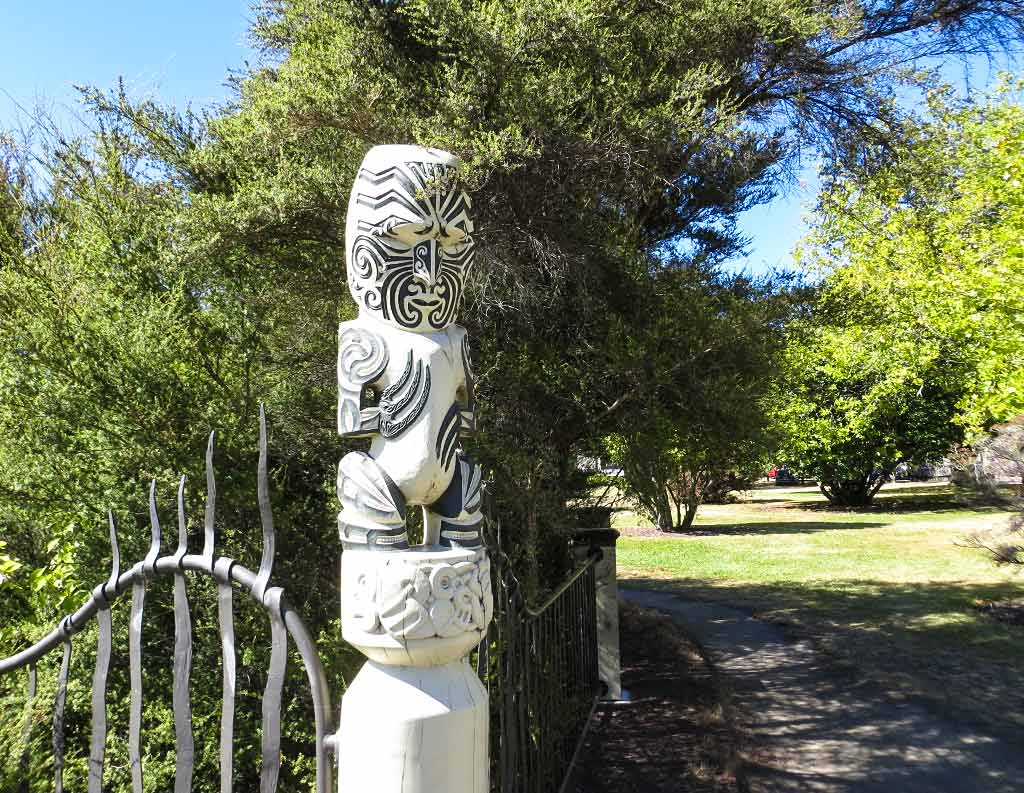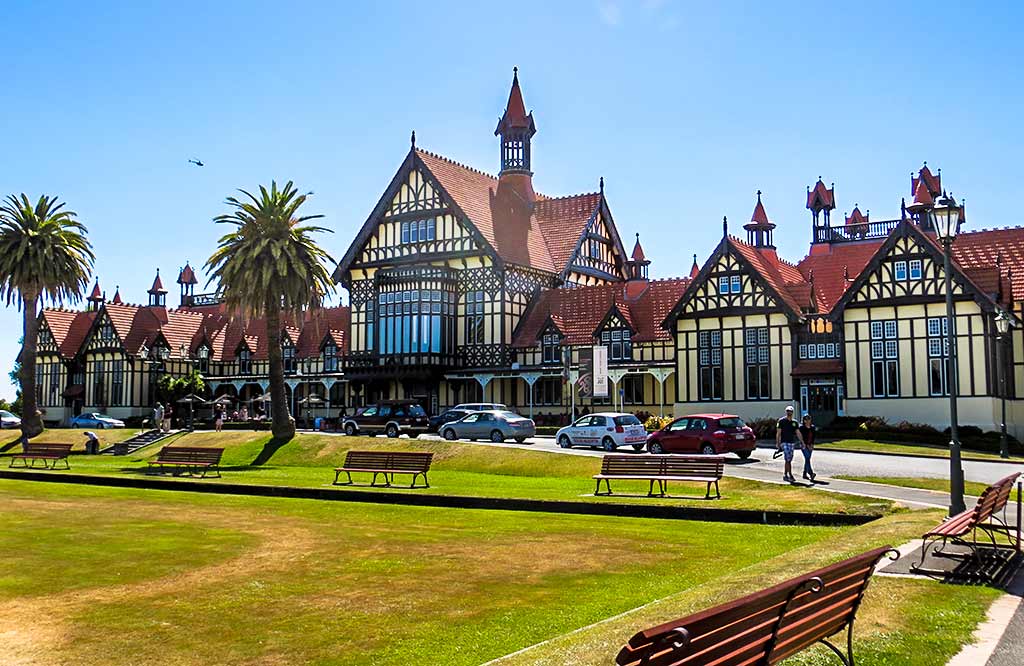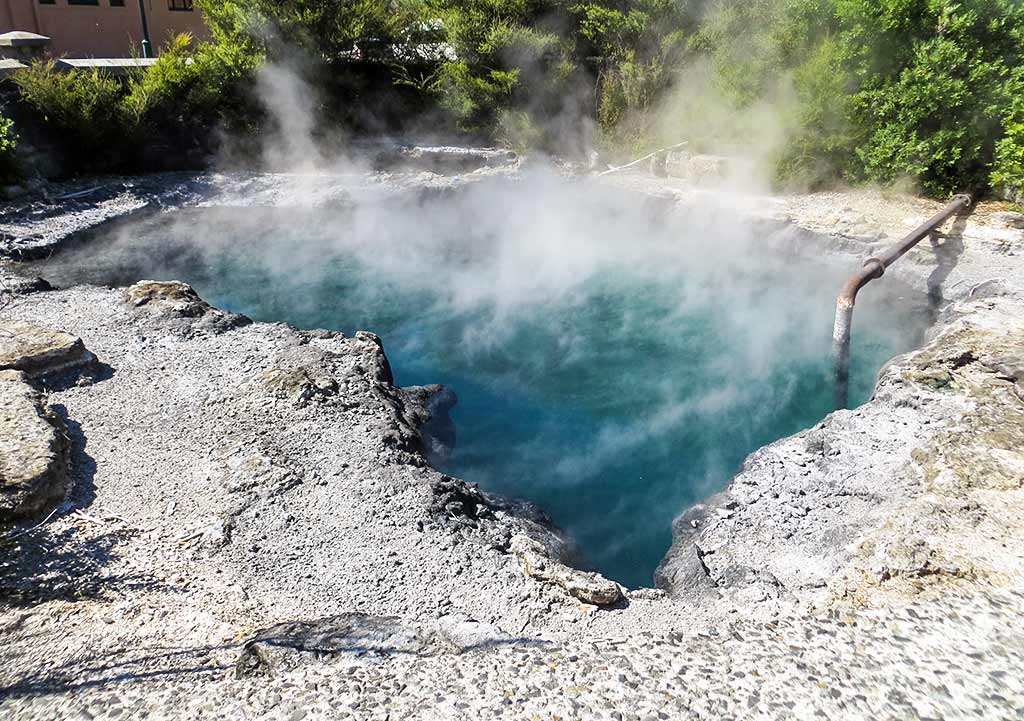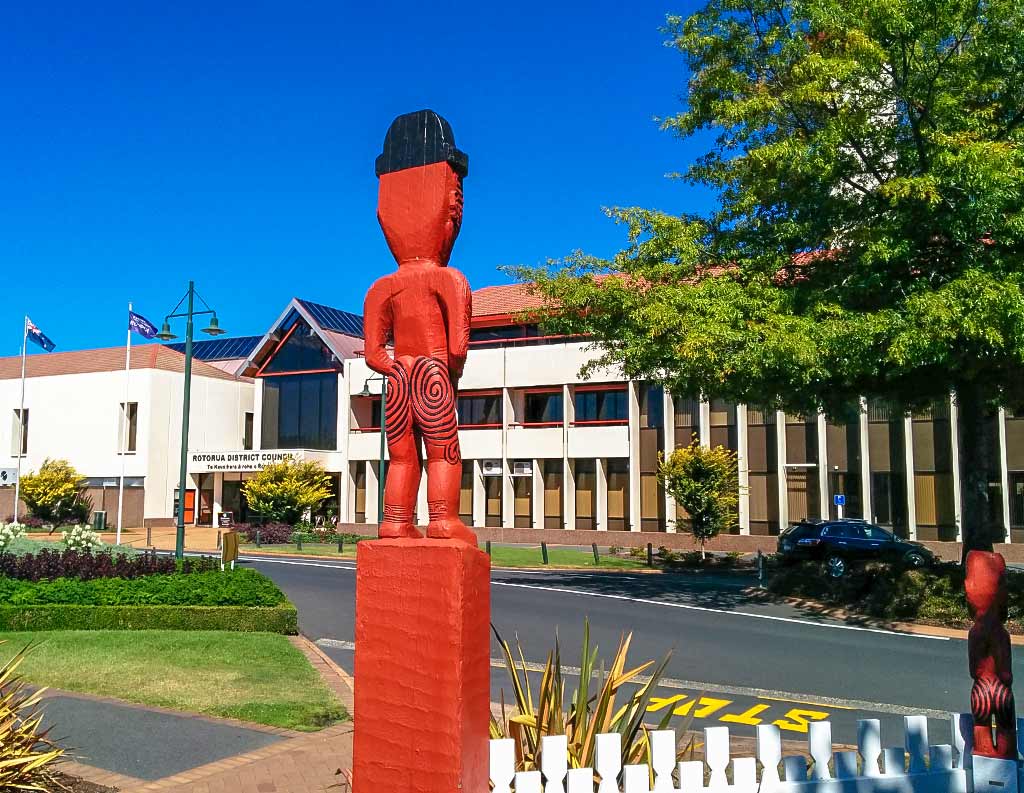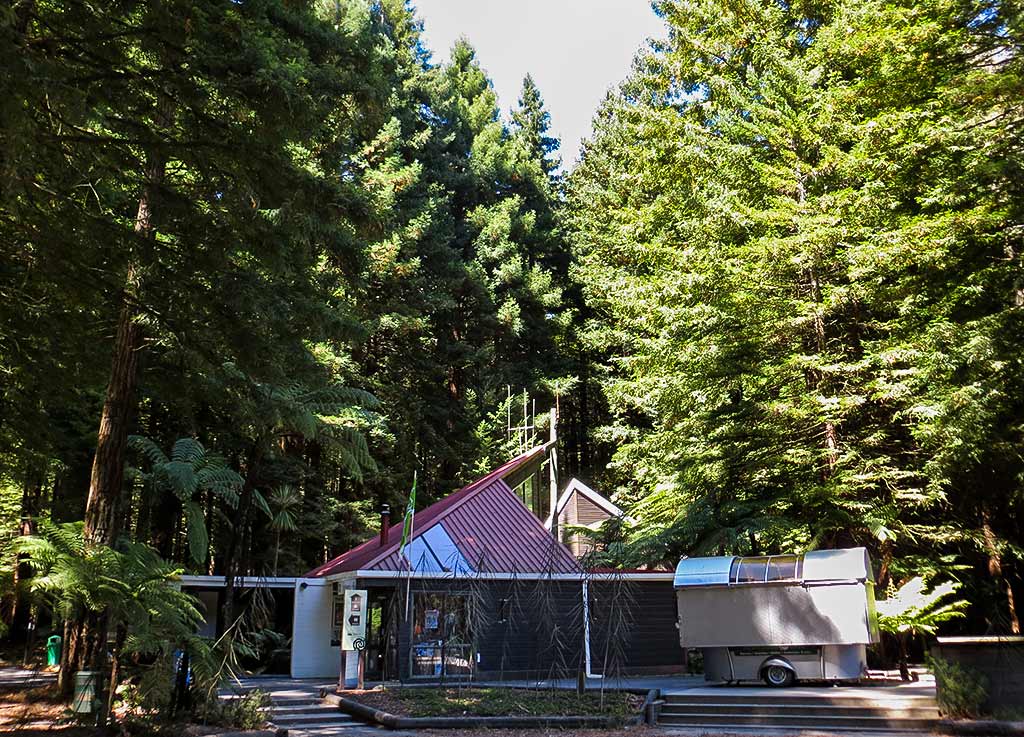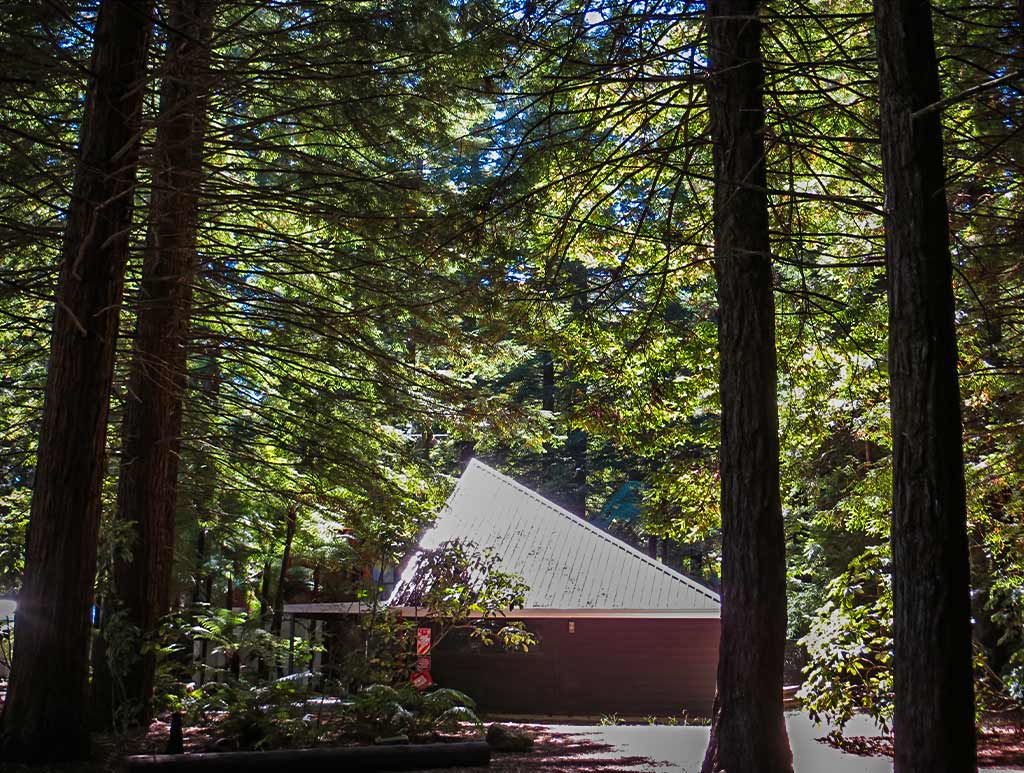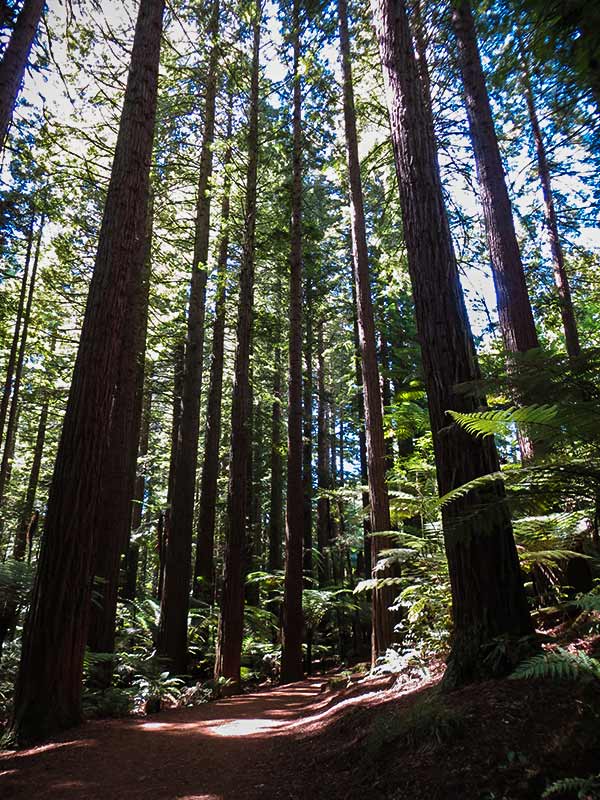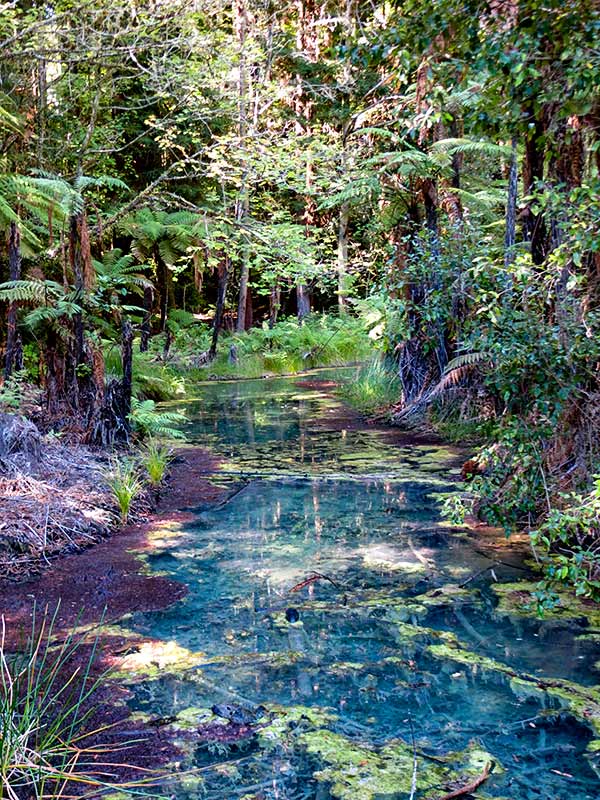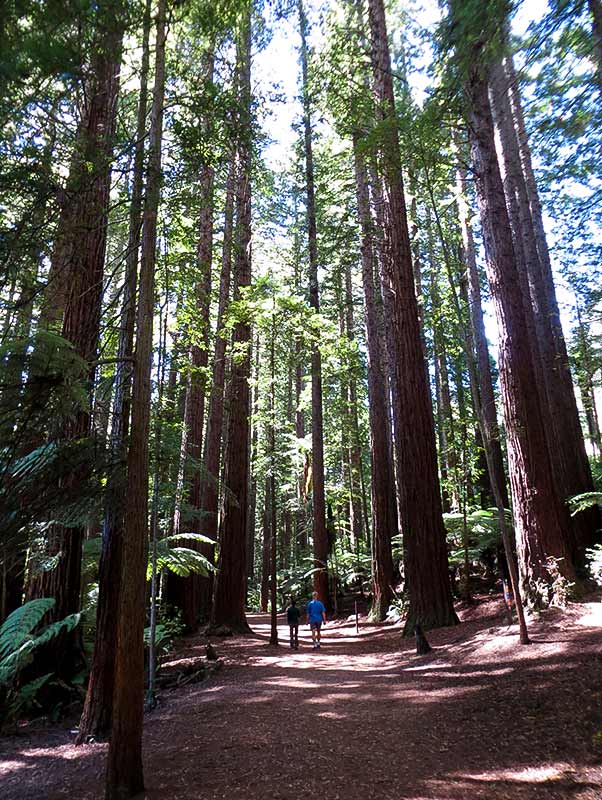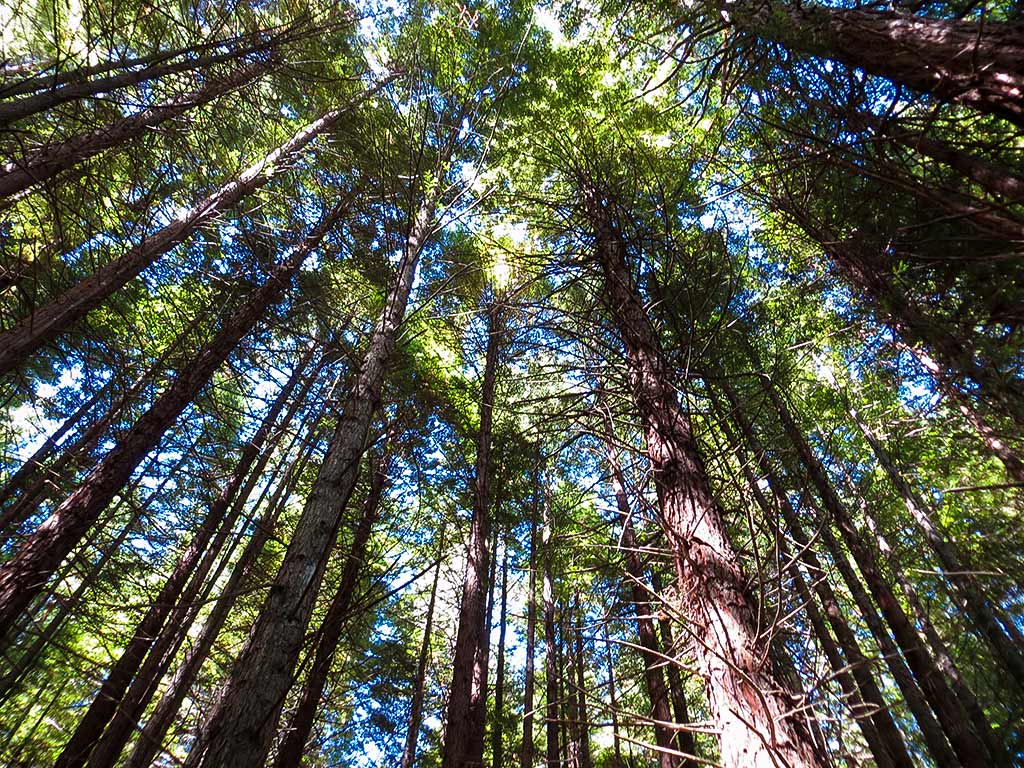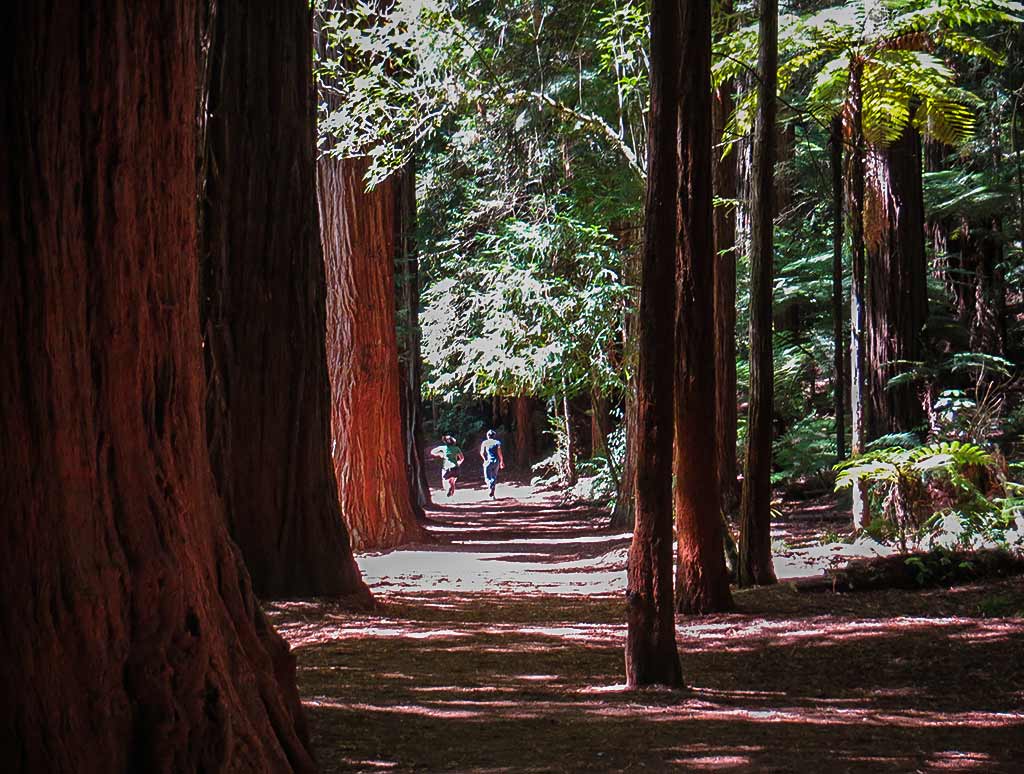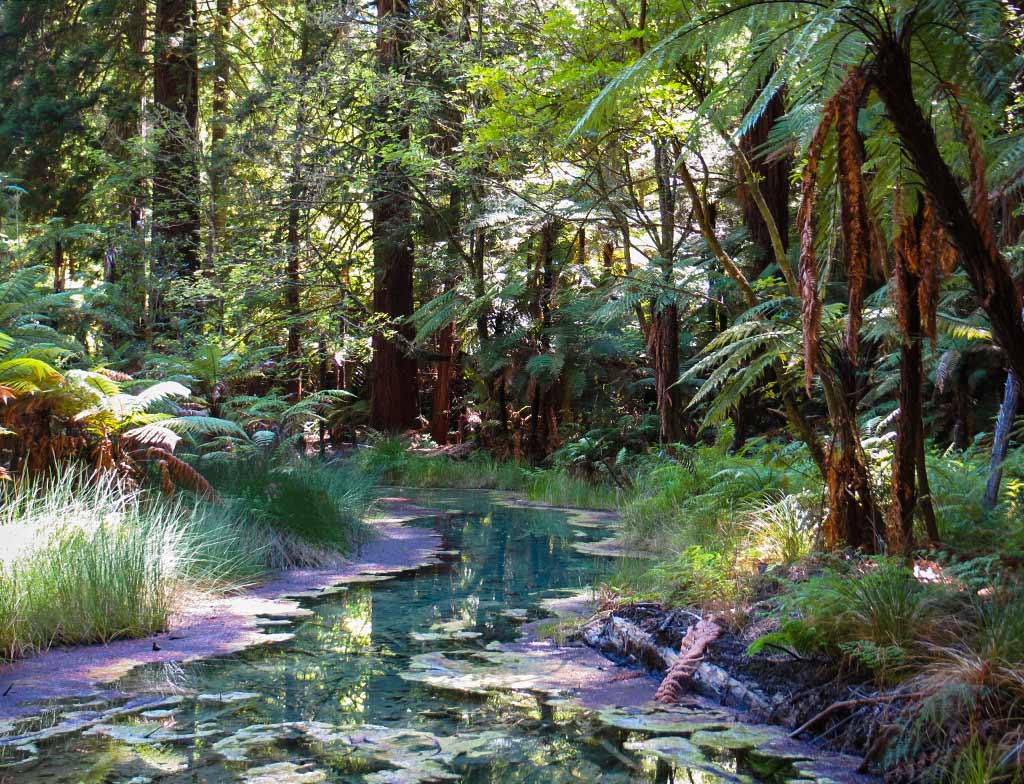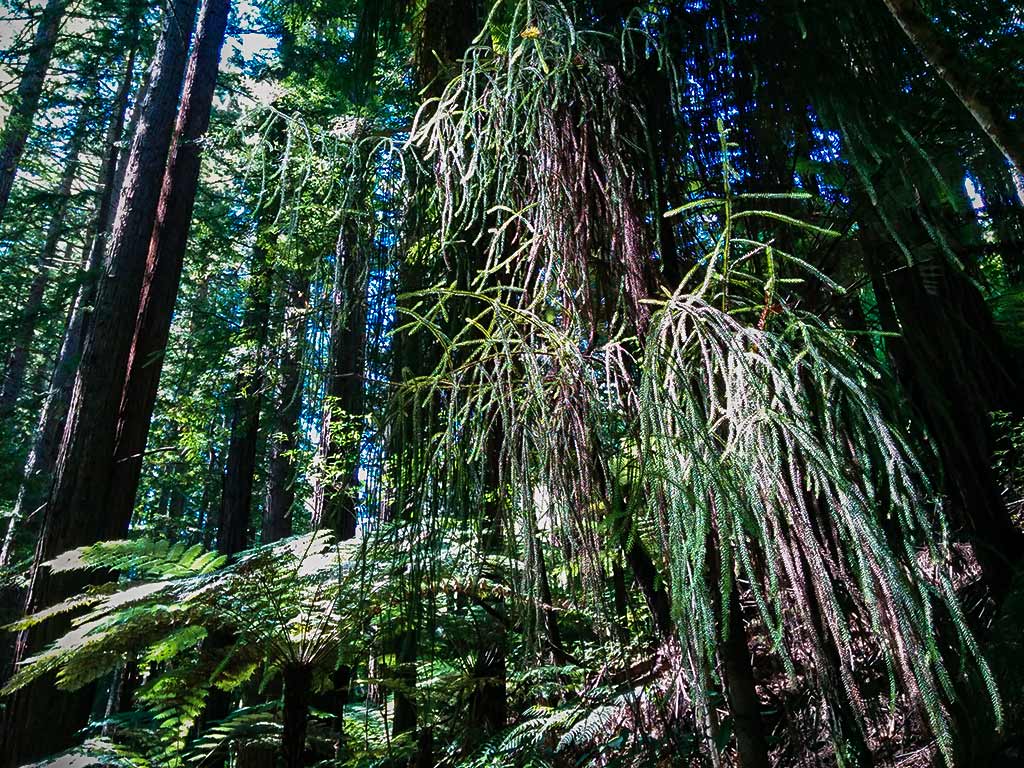And now, picking up where I left off in 2014…
February 25, 2014
Rotorua is a district of lakes, parks, and a namesake town that lie about an hour’s drive from the east coast of New Zealand. It’s not a national park, but it certainly seems worthy of that title. Although it’s easy to get to, it can be one of the most challenging places to travel in New Zealand simply because it has so many attractions from which to choose!
A geothermal and cultural wonderland, Rotorua sits amid numerous lakes and boasts several major thermal parks, Maori cultural attractions and shows, thrill-seeking activities such as bungy jumping and river rafting, a museum in a magnificent historic building, a volcano-buried archeological site, two hot-spring spas (and some natural hot springs that are free if you know where to find them), a sizeable redwood forest, the gondola-accessed Skyline complex, a small zoo featuring indigenous wildlife, a sheep farm featuring shearing demonstrations, and a central town.
Rotorua has become such a tourist mecca that it has earned the controversial nickname “Rotovegas.” Personally, I think it has much more in common with Disneyland than Las Vegas, and it would be easy to label the attractions with the old ticket book system Disney used, going from A Tickets for the most minor stuff to E Tickets for the biggest attractions. Each Disney ticket had a value, getting progressively more expensive as they went from A to E.
Rotorua may not have Disneyland’s ticket books, but you do have to buy tickets to (and sometimes book ahead for) many of the attractions. If one’s focus is on the “E Ticket” options, the cost of a visit could add up very quickly. The slogan here could be “Rotorua. Bring your wallet!”
Thankfully, some of the sights are free or low cost. Because we were staying in Tauranga with Rotorua less than an hour away, we could visit multiple times and mix and match the “tickets” in order to avoid one big heart-stopping expense. During our previous trip (in 2013) we’d visited Waimangu Volcanic Valley thermal park (E Ticket), the Skyline complex (D Ticket), and Ohinemutu–a historic Maori village village interspersed with natural boiling pools (A Ticket).
For this trip, I planned a visit the Wai-O-Tapu geothermal park (E Ticket), the Rotorua Museum (C Ticket), the Redwood Forest (A ticket), the Green and Blue Lakes (A ticket), the Polynesian Spa (D Ticket), and the Lake Tawarera Water Taxi Eco Ride (E Ticket). Again, the ticket letter is more indicative of the price of an attraction, not its worthiness. For example, the Redwood Memorial Grove was free, but it was stunningly beautiful.
It would be a busy couple of days, and even when combined with the activities of our previous visit, this would still not cover everything I hoped we’d eventually do in Rotorua. Below, an interactive map of attractions we planned to visit.
It was a beautiful sunny morning as we headed off to Rotorua, a great day for a getaway. Our first stop in town was our hotel, called the Rydges. We’d gotten a great deal because they were doing major renovations in their central atrium. Even with the construction it was surprisingly nice, and I was glad we’d upgraded from our last year’s luggage–plastic grocery bags–to a reusable cloth grocery bag boasting the logo of Countdown, New Zealand’s most popular grocery store.
No, it wasn’t Louis Vuitton, but it was better than the plastic trash bags we felt-tipped marked with the LV logo when we stayed at the elegant Langham Hotel in Auckland. (Note: No one was fooled by our drawn-in LV logos—the poor Langham bellhop gingerly hung our plastic grocery bag from his carrier as if it contained dog poo before taking us up to our room. Of course we tipped him, and that fixes a lot of indignities. After all, he had to carry the bag—we simply hung back and pretended not to know him.)
The hotel stop to drop off our stuff was followed by today’s visit to a cultural attraction, the Maori-themed Mc Donald’s for lunch. I’ve noticed that when a Mc Donald’s is built in a much-visited place with a lot of character, they tend carry the theme into their interior decor. This one turned out to be no exception as it featured a lot of Maori wood carvings and some unusual seating. I wish they’d taken it one step further and featured a traditional Maori feast dish (they could call it the Mc Hangi), but that might be asking too much.
Below, some photos from inside the Mc Donald’s (click on any photo in the galleries that follow to enlarge).
We then we stopped by the local i-SITE Center (New Zealand visitor information centers scattered throughout the country). This center was fancier than most, big and filled with souvenirs, brochures and a ticket booking counter manned by a line of employees wearing headsets, looking like they could either sell attraction tickets or conduct a rocket launch. I pitied any tourists who enter this place without a plan—it would be utterly overwhelming! I already had our plans in place but wanted to come here to see their hot mineral footbath. But with its tepid water and appearance that no one actually uses it, I wasn’t tempted to stick my feet in there. Rich joked that maybe we should just head back to Tauranga now. I didn’t find that funny.
The first real attraction of the day was the Rotorua Museum, set in historic grounds called the Government Gardens. I hadn’t checked prices, though, and was a bit shocked to find the museum cost $20 a person. Rich isn’t into museums and that price was a deal-breaker for him. Sometimes I’ll go into a museum solo, but even for me that price seemed steep. So instead we walked around the Government Gardens and looked at some boiling pools and the historic bathhouse. It was interesting, but I was starting to worry this trip might be a bust. Perhaps starting our Rotorua tour with a visitors center and Mc Donald’s had been a mistake.
Below, photos of the museum and Government Gardens.
We had some time to kill before our first booked outing, a boat ride across one of the lakes, and I realized the Redwood Memorial Grove would be a perfect time filler. Redwoods aren’t native to New Zealand, but for an experiment early last century they were planted, along with other exotic trees, to see if they would be viable for commercial forestry. The outcome was these redwoods did better here than in their native soil, reaching over 230 feet within 100 years. In spite of that, nothing came of the logging industry’s hopes for the redwoods, and this magnificent grove is now protected for recreational use.
Our plan was to take the Memorial Grove Trail through the forest, which thankfully began near the parking area where clueless Americans could find it easily. Instantly we found ourselves in a sea of redwoods, very close together with not much growth on the ground. But as we walked further in, we found the trees were older, bigger, and more spread out with ferns and tree ferns on the forest floor. These were not as big as our California redwoods, which are hundreds, even thousands, of years old, but they were impressive. As far as beauty, we’d consider this forest was a match for our sequoia and redwood forests in California, and we’d urge any native New Zealander to visit this place to get a taste for California’s national parks.
This walk was so beautiful that we opted to take the longest route (making it about an hour walk). After a time the redwoods petered out and native New Zealand bush forest emerged. As we made our way back towards our car, I finally felt like we’d gotten off to a good start on this trip. Below, photos of the redwood forest.
Next up we had a few more plans for the day, which I’ll cover in Part Two. –Cyndi

